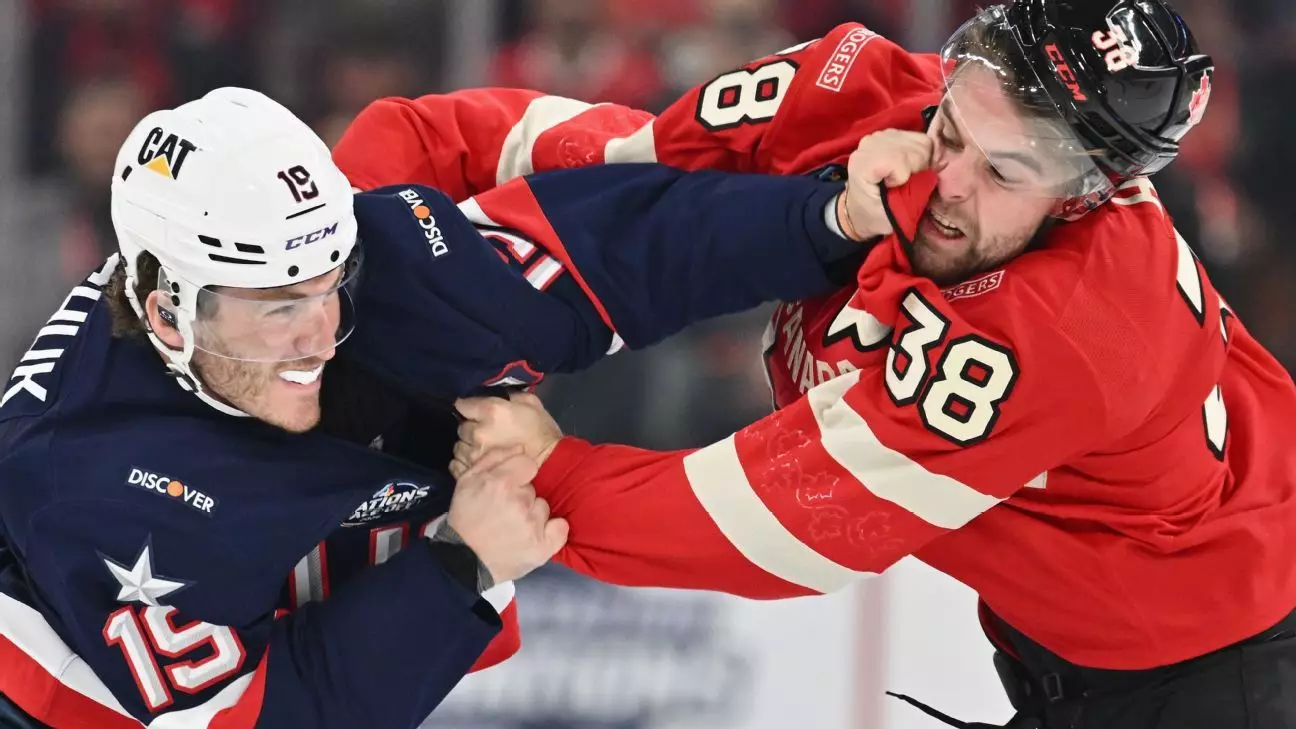This past Saturday, the world of hockey witnessed a game that has resonated far beyond the ice rink – the mesmerizing clash between Team USA and Canada at the NHL 4 Nations Face-Off. Coach Jon Cooper of Canada, despite his side’s disappointing 3-1 defeat, acknowledged the significance of the game, stating, “The game is in a better place because last night’s game existed.” Such recognition illustrates not only the sheer intensity of the match but also its potential to shape the future of hockey.
The match garnered a staggering viewership, peaking at 5.4 million American viewers, making it one of the most-watched hockey games in recent history. This event marked the first meeting of elite players from both sides since the 2016 tournaments, promising a level of competition that fans had long awaited. Viewers anticipated witnessing generations of top-tier NHL athletes go head-to-head, each fiercely representing their nation.
What may have started as an ordinary game quickly transformed into an electrifying spectacle. Montreal fans booed the U.S. national anthem in protest against political issues surrounding President Trump’s tariffs on Canadian imports, setting a charged atmosphere before the puck even dropped. The game erupted into action, featuring three fights in rapid succession—a record achievement that occurred within the first nine seconds.
Witnessing this level of aggression was a surprise even for seasoned players. Jesper Bratt of Sweden remarked, “I knew it was going to be an electric start, but I maybe didn’t expect three fights in the first nine seconds.” The intense emotions were palpable, with Matthew Tkachuk, Brady Tkachuk, and J.T. Miller representing the U.S. with widespread participation, turning the game into a high-stakes feel akin to a playoff match.
The unique presence of fighting in hockey has always been a contentious topic. Cooper addressed the “naysayers” who criticize this element of the sport. However, he pointed out that these fights ignited fierce competition: “When you get the best players in the world… a hockey game broke out, and it was fantastic.” This sentiment underscores a fundamental aspect of hockey culture, where physicality often enhances rivalries and, in turn, improves the quality of each game.
Travis Konecny, a forward for Canada, articulated the emotional weight behind such encounters. He stated, “We’re one of the only sports that still has fighting in it. It’s a war out there,” referring to the pride players carry representing their countries. Fighting, therefore, becomes more than mere aggression; it embodies the struggle and passion inherent in national representation.
The significance of the USA-Canada showdown extends beyond the immediate rivalry. Players and coaches alike recognized the historical essence of moments like these in shaping the sport’s future. Jack Hughes, a forward for Team USA, reflected on the attention garnered by the event, likening the atmosphere to an experience beyond the traditional All-Star Game. This hype could potentially inspire a new generation of players, much like the renowned “Miracle on Ice” did in 1980.
U.S. coach Mike Sullivan highlighted this potential impact, declaring, “It’s great for the sport itself,” hinting at a generation of players who may be motivated to lace up skates after witnessing such fervent national pride on display.
With a rematch between USA and Canada looming, the stakes couldn’t be higher for both teams, promising another thrilling contest. The stakes not only involve national pride but also the growing interest in hockey from casual fans and young aspirants alike. As the fans gear up for the upcoming matchups on Monday, with Canada facing Finland and the U.S. taking on Sweden, the question remains: can this rivalry reignite a passion for hockey that resonates with millions?
The recent USA-Canada game at the NHL 4 Nations Face-Off represents more than just a score on the ice. It encapsulates the raw emotion, national pride, and deep-rooted rivalries that define hockey culture. As the journey continues in this tournament, the hope is that such matches will inspire future athletes, breathe new life into the sport, and ultimately foster an enduring love for hockey across generations.


Leave a Reply